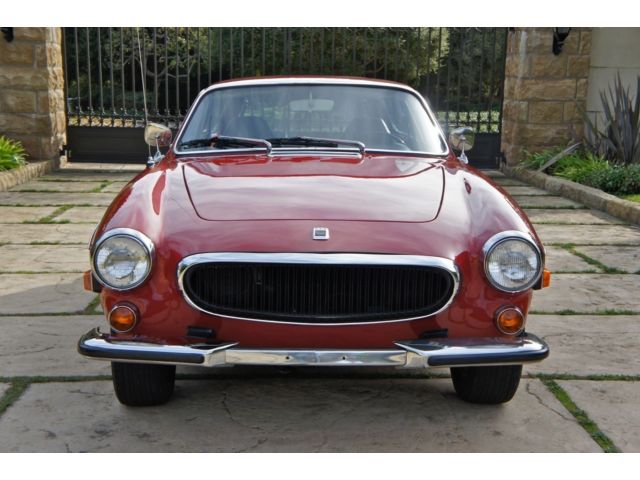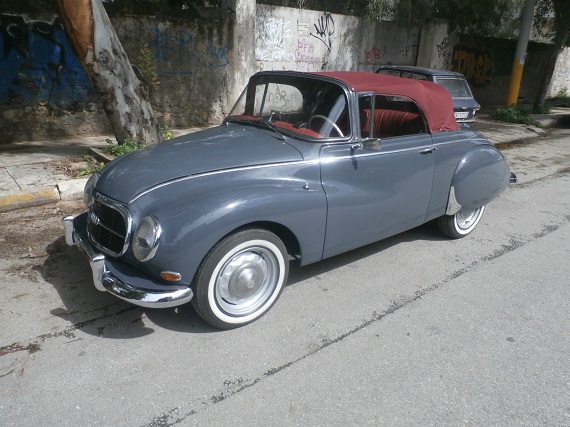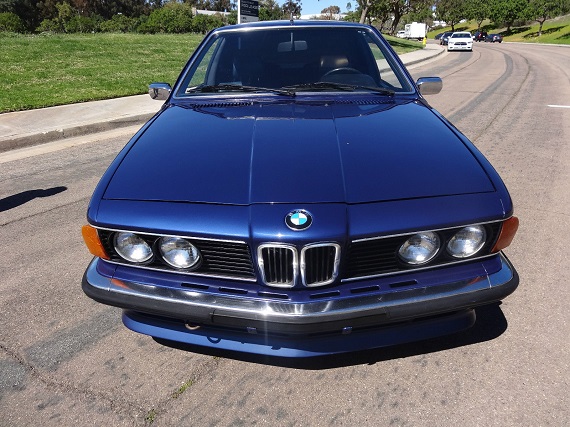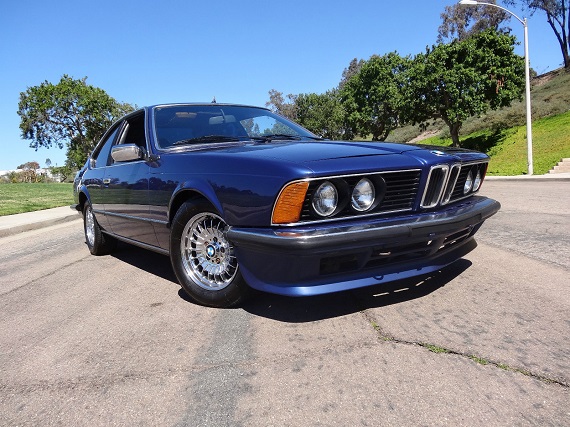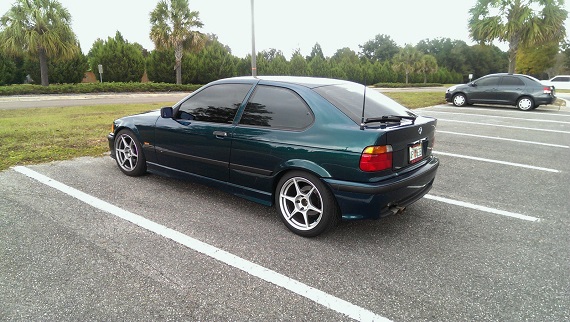There’s a running joke here at GCFSB regarding Volvos and SAABs. Without exception, every time we post one someone comments either here or on our Facebook page that those two manufacturers aren’t German. It doesn’t really matter that we explain nearly every time that though we know this, we still enjoy to look at a super Swede from time to time since – let’s face it – a majority of people on Facebook don’t actually read the articles that are posted, but rather just react to the headlines. Now, we could actually get into a discussion about how the Swedes are actually a Germanic based tribe if you go back far enough, or how many of their engineering principles fall in line with those of their Southern neighbors. We could mention that many of the newer Volvos and SAABs actually utilized German derived chassis from either Ford Europe or GM’s Opel division. But that would be pointless since those arguments don’t apply to today’s example, the P1800ES. You see, Volvo is mostly regarded as builders of very slow moving, very safe and very conservative boxes – but go back a few generations, and Volvo threw a few curve balls as the plate. None were more curvy than the P1800, a pseudo-sports car with stunning looks available in coupe version or the more rare 2-door wagon:
Author: Carter
If you’ve been following my 6-part documentary on the Silver Arrows, you’ve seen the four rings of the Auto Union pop up. Now synonymous with Audi, the Auto Union was in fact four different companies that banded together, much like the Volkswagen Group of today. Like the Volkswagen Group, they had a range of cars; Horch for ultra-luxury, Audi was the sportier gentleman’s car, Wanderer covered the middle range and the entry level products and motorcycles were covered by DKW. All of the companies, independently, had significant history, but as we’ve seen in the Silver Arrows documentary, the depression years in the 1920s and 1930s meant that just like Daimler and Benz, the Auto Union was a partnership formed out of necessity for survival in a market where few cars sold. However, as we’ve also seen, the massive investments in infrastructure and breaks on taxes meant that the automobile industry was experiencing a big push by the mid 1930s, coupled with new technology and aerodynamic designs. One of the most promising designs for the Auto Union was the DKW F9; a versatile, aerodynamic small car, it resembled the KdF “Volkswagen” (Beetle) prototypes but was more refined. However, the outbreak of the war stalled the project, slated to launch in 1940. As with other similar projects by German automobile companies, the remnants of the company picked up the project in the late 1940s, and the “new” DKW F91 project rolled out in 1953 as the DKW 3=6 “Sonderklasse”. With a .9 liter two stroke inline-3, the performance wasn’t going to shock you but it was a cleverly packaged car and sold well. It was replaced in the late 1950s by an updated version, now named the Auto Union 1000; updated lightly and with more power from the now 1.0 liter motor, it was available in 5 different configurations and was the basis for the much loved but rarely seen 1000SP roadster – the mini-Thunderbird. Today’s example is an interesting 1962 coupe that apparently was converted into a cabriolet at some point:
CLICK FOR DETAILS: 1962 Auto Union 1000S Cabriolet on eBay
1 CommentSellers of automobiles – specifically, most second hand dealers – always interest me. It seems that seldom they do the research to properly sell a vehicle. Perhaps when it comes to a brand new Kia, research just isn’t really necessary – but a 30 year old classic German car? Is some description better than no description? Sure, I guess at least there was an attempt made. But, if very little to none of the information actually applies to the model, I guess I’d err on the side of maybe it would just be better off with no description and just some pretty photos. At least in that case, I’d be annoyed that no effort was made to explain what I was looking at, but an effort made that misrepresents the product or just shows a lack of attention to detail? Now, that I find even more annoying. It’s much like plagiarism; I’d rather receive a poor quality essay on the right topic than an award winning lifted essay on the wrong topic. So, let’s look at this strangely portrayed E24:
CLICK FOR DETAILS: 1982 BMW 635CSi on eBay
2 CommentsOkay, so maybe the Renault 5 isn’t your thing. I get it, it’s not mine either. I like the ideal and audacity of the Turbo models with their mid-engined lunacy, but pricing on good examples is pretty outrageous and if the videos of them driving are to be believed, they’re not the best hatch dynamically. No, I’ve pretty much always been a Golf fan, having owned a few of them now. But I must admit I had a soft spot when the E35/5 hatch popped up for sale. To me, it combined some luxury looks with practical performance. And when I say performance, honestly there wasn’t much available. The M44 engine that was fit to the 318ti was a decent performer, but it had only 138 horsepower, and at the price point you were much better off getting a GTi VR6, which oddly was more luxury oriented than most of the 318tis and offered more performance. However, the base of the 318ti was a good idea; a smart looking, light and nimble hatchback with a manual transmission and rear drive. And, of course, being an E36 platform, it was ripe for engine transplants. Today’s example is one of the more rare M-Sport equipped models, but this one has yanked the M44 in favor of an odd choice – the M52B25:
CLICK FOR DETAILS: 1998 BMW 318ti M52 on eBay
Comments closedWhat can be said about the Renault 5 that hasn’t already been said? The R5 was a pioneering design, a monumental testament to the power of the French automobile industry. So confident were French engineers in the inherent superiority of their design that when it came to marketing the car in the United States, they simply called the R5 “Le Car”. Why else would any consumers buy anything else? This was, after all “THE CAR” – the only one you’d ever need. Notably, Ferrari has recently attempted to mimic the success of this marketing ploy with its new eco-friendly hybrid car, though it’s doubtful the Ferrari “The Ferrari” will ever be as memorable as the Renault “The Car”. The hot French hatch was an instant hit amongst U.S. consumers, who didn’t require such decadence as luxury, build quality, fuel economy, or performance in their cars. Sure, the GTi had more power and better handling. But looks? No, Marcello Gandini famously said “I have penned cars such as the Countach, Miura and Stratos, but I refer to the second generation refresh of the Renault 5 as my masterpiece”. And Renault made sure that this was a constantly evolving design by once again being a market leader and providing no rust proofing, ensuring that these cars would be on a steady weight-loss program. Okay, so truth told Renault did offer a performance version in the R5 Turbo. It was the worst car ever made, period. Where were you supposed to carry your baguettes, after all, since they mounted the motor in the back where your groceries and your guppies would be placed? No, smart consumers saw right through that ploy and bought what was a better and smarter long term value in the normal model.
Since it was really only a discerning few who saw through the market hype of the plethora of reliable and good performing Japanese and German automobile options in the 1980s to find the true diamond in the Renault, very few remain available today. However, luckily this pristine example has been imported. Smartly, the seller has not only left the engine configuration up to the next owner, but also which side the steering wheel will end up on. Even more amazing is that you can decided which year this car should be. Should it be 1987 or 1978? Either way, this pioneering design is a rare opportunity to own what virtually all automobile enthusiasts consider the definitive hot hatch:
